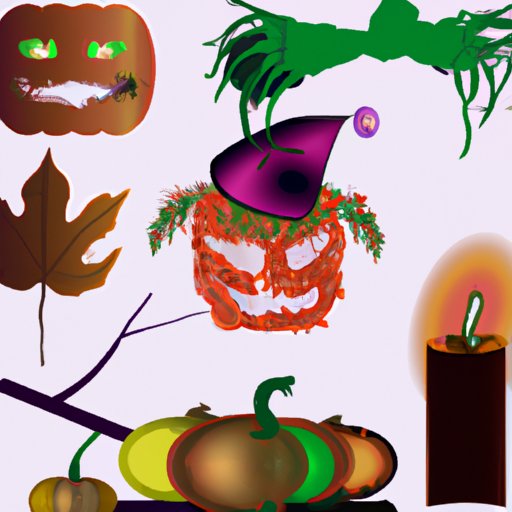Introduction
Halloween is an annual holiday celebrated on October 31st that is both fun and mysterious. It’s a time for kids to dress up in costumes and go trick-or-treating, while adults enjoy themed parties and other celebrations. But have you ever wondered how this beloved holiday came to be? In this article, we’ll explore the history and evolution of Halloween, from its ancient origins to the popular celebration we know today.
Historical Origins of Halloween
Halloween has its roots in the ancient Celtic festival of Samhain, which was celebrated throughout Ireland, Scotland, and the Isle of Man. The festival marked the end of summer and the beginning of winter, and was believed to be when the boundaries between the living and the dead blurred. During Samhain, Druids would light bonfires and people would gather to offer sacrifices and tell stories of the spirits believed to be wandering the earth.
As Christianity spread throughout Europe, the holiday was eventually Christianized and became known as All Hallows’ Eve, or “Hallows’ Evening.” This is where the name “Halloween” comes from, as it’s a combination of the words “All Hallows’ Eve.” Over time, the holiday evolved into a celebration of mischief, with children dressing up in costumes and playing pranks. This tradition is still alive today, with many people participating in costume parties, haunted houses, and other activities associated with the holiday.
The mythology behind Halloween also plays a role in the holiday’s history. According to folklore, the souls of the dead were said to return to the world of the living on Halloween night. To ward off these spirits, people would dress up in costumes and wear masks to disguise themselves. This is why dressing up in costumes is such a popular part of modern Halloween celebrations.
The Evolution of Halloween
Over the years, Halloween has become more commercialized and popularized as a family-friendly holiday. In the late 1800s, Americans began to embrace the holiday and turn it into a secular celebration. People started to decorate their homes with jack-o’-lanterns, ghosts, and other spooky decorations, while stores began to sell candy and costumes.
By the mid-1900s, Halloween had become a major holiday in America. Schools began to host costume parades and parties, and trick-or-treating became popular among children. Today, Halloween is celebrated all over the world, with countries like Japan, Mexico, and the United Kingdom embracing the holiday and its traditions.
At its core, Halloween is about celebrating the supernatural and embracing our fears. It’s a way for us to explore our darkest thoughts and take a break from reality. As Dr. Elizabeth Tucker, a professor of anthropology at the University of South Florida, explains: “Halloween gives us permission to explore our fears and fantasies in a safe way. We can think about death, but in a non-threatening way.”
Conclusion
Halloween is a beloved holiday that has been celebrated for centuries. From its ancient Celtic roots to the popularized version we know today, Halloween has evolved over time to become a global phenomenon. With its spooky decorations, costumes, and candy, Halloween is a unique holiday that allows us to explore our fears and fantasies in a safe and fun way.
(Note: Is this article not meeting your expectations? Do you have knowledge or insights to share? Unlock new opportunities and expand your reach by joining our authors team. Click Registration to join us and share your expertise with our readers.)
